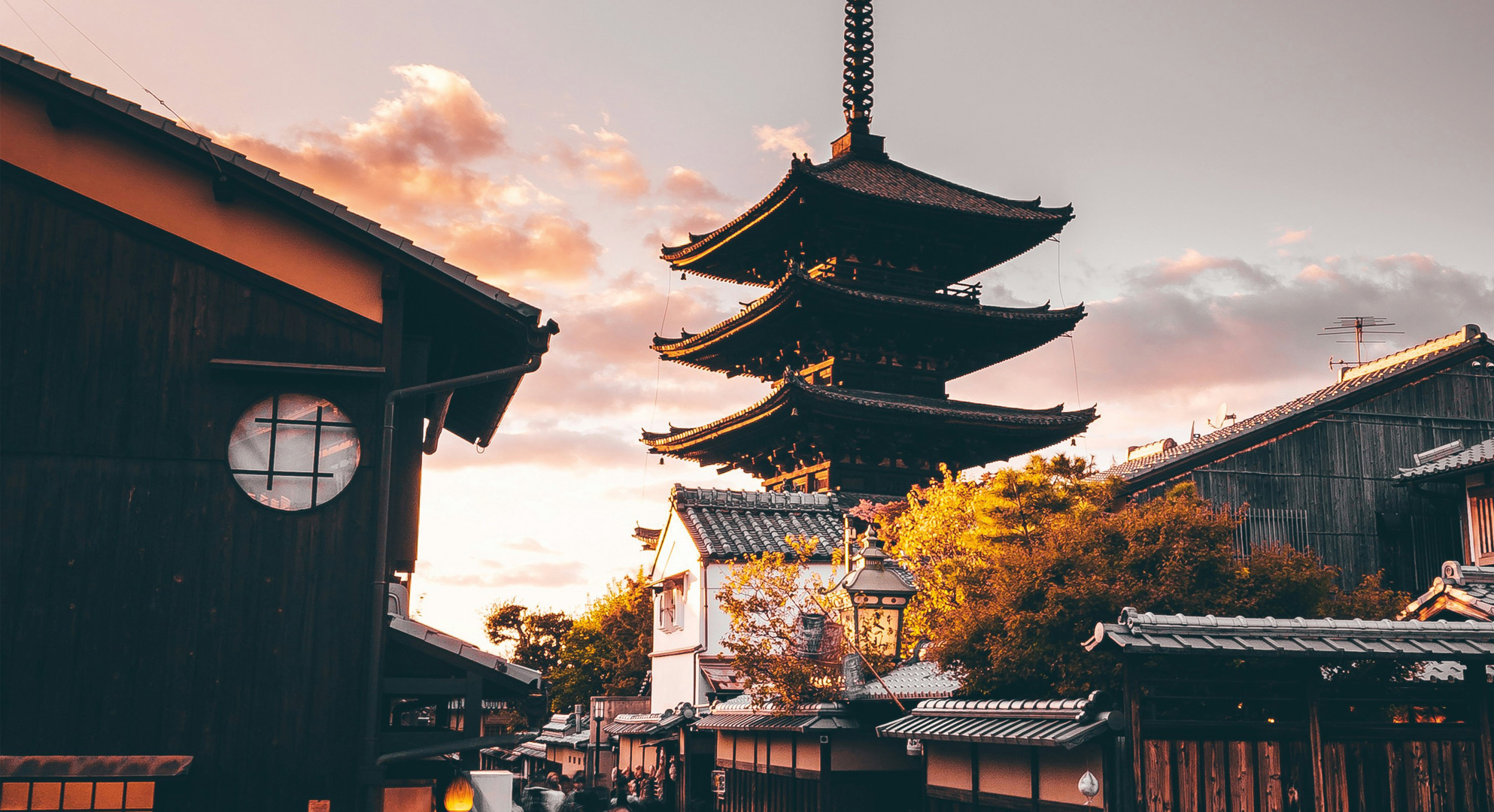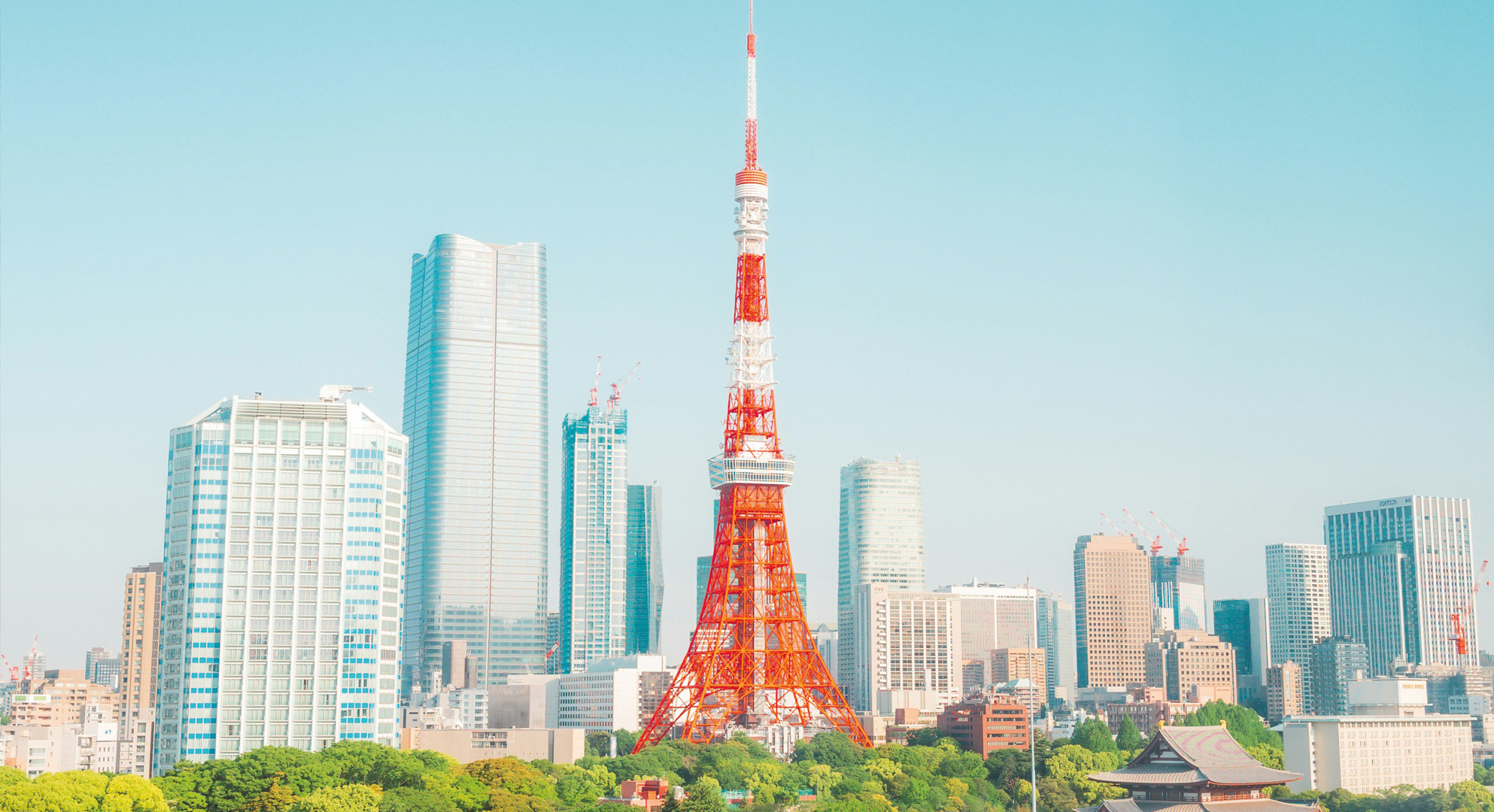Attempting to write a visitor's guide to Japan would be an act of sheer audacity. Conde Nast, Kinfolk, Monocle, and Lonely Planet all have dedicated volumes to the country’s unique charm—its timeless architecture, meticulous craftsmanship, and culinary mastery, among other wonders.
Instead, consider this a collection of THU insights, a handpicked selection of places dear to the THU team and friends. Whether you’re a first-time or a seasoned visitor, let this be your invitation to experience Japan through our eyes. Follow our footsteps, take a few detours of your own, and lose yourself in a country that never ceases to enchant.
Kyoto: Where Past and Present Blend
Once the imperial capital, Kyoto is a city of whispers, where history lingers in serene gardens, temple courtyards and narrow, timeworn alleyways. Best known for its breathtaking UNESCO-listed sites, Kyoto’s tradition is honored daily by its many visitors.
For those with only a day to explore, begin at dawn—before the crowds awaken and beat you to the spots.
Start at Rurikō-in, a former Meiji-era villa turned Buddhist temple in the northern part of Kyoto (about a 40-minute train ride from Kyoto Station). It is well known for its stunning architectural design, traditional tea room, and reflective tables that mirror the vibrant maple tree gardens. The whole experience is remarkable and worth the entrance fee.
Closer to central Kyoto and the Nishiki Market, the Eikan-do Temple, originally the residence of a noble during the Heian Period (794-1185), is famous for its long wooden corridors that go up and down, resembling a dragon's stomach and its Tahōtō Pagoda, which gifts its visitors with great views of the city below. The temple grounds and nearby attractions also make this a perfect spot for a nature stroll.
When it comes to Kyoto’s world-famous bamboo forests, it’s wise to step away from the ever-crowded Arashiyama Bamboo Grove. One of Kyoto’s top sights, it has become almost impossible to walk by and admire its natural beauty at your own pace. As a smart alternative, we suggest checking out Adashino Nenbutsu-ji, a beautiful temple with its own, much less crowded, bamboo grove, not so far away from the Arashiyama area. Adashino Nenbutsu-ji is dedicated to the souls of those who passed away without family to care for their tombstones, housing over 8,000 ancient stone statues, each representing one of these lonely spirits. Here, tranquility reigns, and it’s about a 30-minute walk from the Arashiyama area.

In the preserved historic Higashiyama ward, in eastern Kyoto, dare to wander compass-free, as the area always rewards curious walkers. Ninenzaka and Sannenzaka, two ancient alleys lined with traditional shops, cafés and restaurants, lead you to Kiyomizu-dera Temple. As evening descends, find your way atop this famous temple to catch Kyoto’s golden sky and stunning city views.
For those seeking outdoor adventure and who prefer to roam away from the center attractions, consider a half-day trip to visit the rural Japanese landscape of Kayabuki no Sato (Miyama). This town’s thatched-roof houses are fully functional houses where people live and work, offering visitors an extra glimpse of nostalgia and authenticity into Japan’s past. The Folk Museum (reservation required) and the Little Indigo Museum are both open to the public.
When hunger calls, Kyoto’s dining scene is nothing short of refined. Here are some cherished spots to indulge:
Ryuhei Soba – A small yet beloved soba restaurant where Kyoto’s essence is served in a bowl. Their noodles, made with pure Atago Mountain water, are delicate yet rich in flavor. (No reservations. You are asked not to wear intense perfume. Closed Tuesdays and Wednesdays).
Shinmonzen Yonemura – A masterful fusion of Japanese and Western cuisine featuring seasonal ingredients in an elegant Kyoto townhouse setting. (Course menus only. Reservations recommended. Closed Tuesdays and Wednesdays).
Washoku Haru – A tiny counter-service restaurant with a great atmosphere offering exquisite Japanese dishes. (Cash only. Reservations recommended. Closed Mondays).
Ogata – A Western-style restaurant that honors Japanese ingredients, pairing dishes with carefully selected sake and wine. (Phone reservations accepted. Closed Tuesdays.)
Hitsuji Doughnut – This charming doughnut shop fries its treats in small batches, ensuring they’re always served warm. Cozy counter seats at the back provide a perfect nook for enjoying your doughnuts. Given its popularity, consider booking a place to sit.
Nara: Where Time Moves Gently
An hour’s train ride from Kyoto stands Nara - once Japan’s cultural center and capital before Kyoto (between 710 and 784). This city holds a very special place in ancient history. Surrounded by World Heritage sites and museums, some will appreciate this break from crowded places as it’s less packed and more chill than Kyoto.
Nara Park is a place of stillness, where you can witness the undisturbed herds of deer that wander freely within its 660 hectares (they were once believed to be messengers of the gods). If you're visiting, don’t miss hiking through the wilderness, there’s true beauty in contemplating simplicity here.
.jpg)
For those drawn to art and nature, the Murou Art Forest is an open-air museum nestled in the wooded hills of Uda. It was created in 1998 as part of a project to celebrate the synergy between nature and creativity in the Nara region. The museum has attracted both locals and tourists since its opening.
The Akame 48 Waterfalls hiking trail is known for its numerous waterfalls and deep connection to the Iga Ninja, who used the grounds as a training place. These peaceful trails are roughly 4 km long and can be completed in 3-4 hours at a leisurely pace, making them compatible with beginner-level hikers.
Further into Mie Prefecture, the sacred Ise Jingū Shrine - often called the soul of Japan - is an unparalleled spiritual experience as rituals and ceremonies take place throughout the year, allowing visitors to grasp the profound reverence Japanese culture holds for the divine.
In Nara’s proximities - situated in the Shiga Prefecture - find the Miho Museum, designed by IM Pei., the museum houses an impressive collection of Japanese and ancient artifacts, from Egypt to China, fulfilling its founder’s vision of spreading joy and peace through art.
For an overnight stay, consider the Ando Hotel, which we recommend for its tranquil embrace of Nara’s peaceful spirit.
Savoring Minato: A Perfect Escape Inside Tokyo
Minato is Tokyo’s polished business district, known for its cultural hubs and culinary gems. But it also happens to be where the THU Team spends much of its time. Explore the neighborhood and its attractions! Here are a few highlights:
TOKYONODE is where business, art, technology, and entertainment come together. It offers a unique blend of modern and traditional Tokyo experiences. At the heart of this hub, you can find trendy restaurants, a co-creation lab, a rooftop garden, a gallery, and a performance wall.
A symbol and landmark for the city, the popular Tokyo Tower offers mindblowing panoramic views and is one of the main observation points in Tokyo. We suggest you spend your day sightseeing and head to the tower at night to gaze at the city’s impressive lights and skyline. Tokyo Tower is accessible from Asakusa, Tokyo Station, Ueno, Akihabara and Roppongi lines.

The Nezu Museum was established to preserve and showcase an exceptional collection of Japanese and Oriental antiquities. The collection includes tea ceremony utensils, Buddhist paintings, sutras, ink paintings, early modern paintings, Chinese paintings, lacquerware, ceramics, swords, and ancient Chinese bronzes. Its beautiful Japanese gardens are also popular for strolls. Enjoy a cup of tea at a café in the garden.
For savory bites at Minato, try:
Adan – An izakaya-style restaurant that offers delicious Okinawan cuisine (from an island located in the south of Japan), with a variety of vegetables, meat, fish, and different types of alcohol. It has a relaxed and intimate atmosphere. It is located in the Takanawa area of Minato ward.
Gonpachi Nishi-Azabu – Best known for President George W. Bush and former Prime Minister Koizumi’s historic Izakaya meeting, this restaurant became then world-famous for appearing in Quentin Tarantino's Kill Bill masterpiece scene. The restaurant's nostalgic atmosphere, reminiscent of good old Japan, attracts a steady stream of fans from home and abroad.
For an authentic Napoli pizzeria, Tarantella da Luigi has a real Italian vibe, and the other dishes are also a must-try.
Other hot spots recommended by the Team!
Moon’s Edge Jazz Bar – The Gekkoso Salon Tsuki no Hanare is a hidden gem that serves impeccable cocktails and an intimate atmosphere with live jazz, which creates the perfect Tokyo night.
Omoide Yokocho – Located in the Shinjuku area, once a post-war black market, is now a lively alley of tiny izakayas serving grilled skewers and drinks. Engage with locals and soak in the nostalgia of old Tokyo.
Ghibli Park (Aichi Prefecture) – A dreamlike tribute to Studio Ghibli’s worlds, where visitors can immerse themselves in Hayao Miyazaki’s enchanting landscapes.
For more Tokyo goodness check this google map full of tips the Team curated just for you.
Kanpai.



